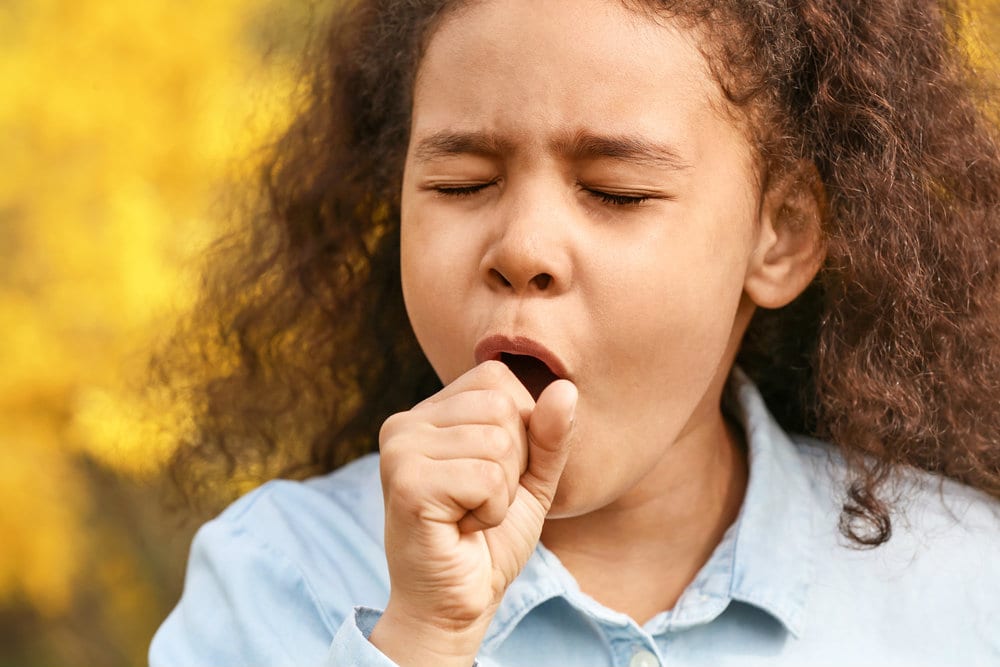What are the symptoms of whooping cough?
Whooping cough, or pertussis, is characterized by a distinctive cough and other symptoms. The primary symptoms include:
- Severe Coughing Fits: The most notable symptom is a series of rapid coughs followed by a “whooping” sound as the person inhales. This whooping sound is often more pronounced in children and less common in adults.
- Coughing Spells: These can be intense and frequent, sometimes leading to difficulty breathing, vomiting, or exhaustion after a coughing spell.
- Runny Nose: Early symptoms may include a runny or stuffy nose, sneezing, and mild fever.
- Low-Grade Fever: A mild fever may accompany the cough, but it is usually not very high.
- Fatigue: Persistent coughing can lead to fatigue and general weakness.
- Apnea: In infants, whooping cough can cause pauses in breathing (apnea), which may be a serious concern.
- Red or Blue Face: During coughing fits, the face may become red or even bluish due to difficulty breathing.
- Post-Tussive Emesis: Vomiting may occur after intense coughing spells.
- Congestion and Watery Eyes: Some people may experience nasal congestion and watery eyes.
These symptoms usually develop in stages, with the initial phase resembling a common cold. The severe coughing stage follows, often lasting for weeks or even months.
What are the causes of whooping cough?
Whooping cough, or pertussis, is caused by an infection with the bacterium Bordetella pertussis. The key factors include:
- Bacterial Infection: The primary cause is the bacterium Bordetella pertussis, which infects the respiratory tract.
- Transmission: Whooping cough spreads from person to person through respiratory droplets. This means it can be transmitted by coughing or sneezing near others, or by touching surfaces contaminated with the bacteria.
- Lack of Vaccination: The risk of contracting whooping cough increases if individuals have not been vaccinated or have not received booster doses of the pertussis vaccine.
- Incomplete Vaccination: Even those who have been vaccinated can get whooping cough if they do not receive all recommended doses, or if their immunity has waned over time.
- Environmental Factors: Although less common, factors such as living in crowded conditions can facilitate the spread of the infection.
- Weakened Immune System: Individuals with compromised immune systems or underlying health conditions may be more susceptible to the infection.
What is the treatment for whooping cough?
Treatment for whooping cough (pertussis) typically includes:
- Antibiotics: Early treatment with antibiotics, such as azithromycin, clarithromycin, or erythromycin, can help reduce the severity and duration of symptoms, especially if given within the first few weeks of the illness. They also help prevent the spread of the infection to others.
- Supportive Care: Managing symptoms is crucial. This may include:
- Cough Medicine: Cough suppressants are generally not recommended for whooping cough, as they are usually ineffective.
- Hydration: Staying hydrated is important, as coughing can lead to dehydration.
- Rest: Adequate rest helps the body recover.
- Hospitalization: Severe cases, especially in infants or those with complications, may require hospitalization. Supportive care in a hospital setting can include oxygen therapy and intravenous fluids.
- Vaccination: While not a treatment for an existing infection, ensuring that all household members and close contacts are up-to-date with their pertussis vaccinations can help prevent further spread and complications.
- Prevention of Complications: Managing complications such as pneumonia or secondary infections might involve additional treatments.

Leave a Reply
You must be logged in to post a comment.